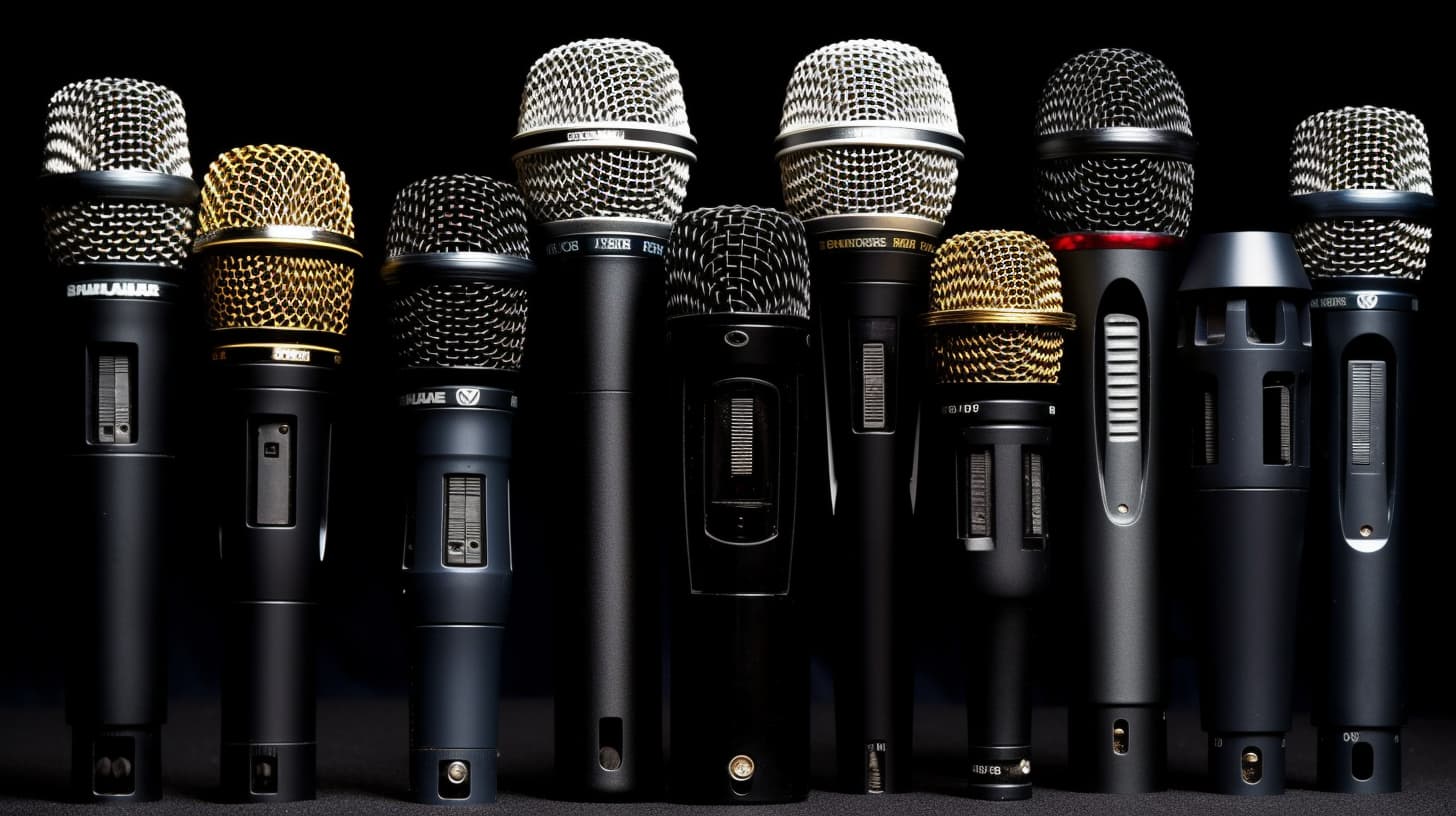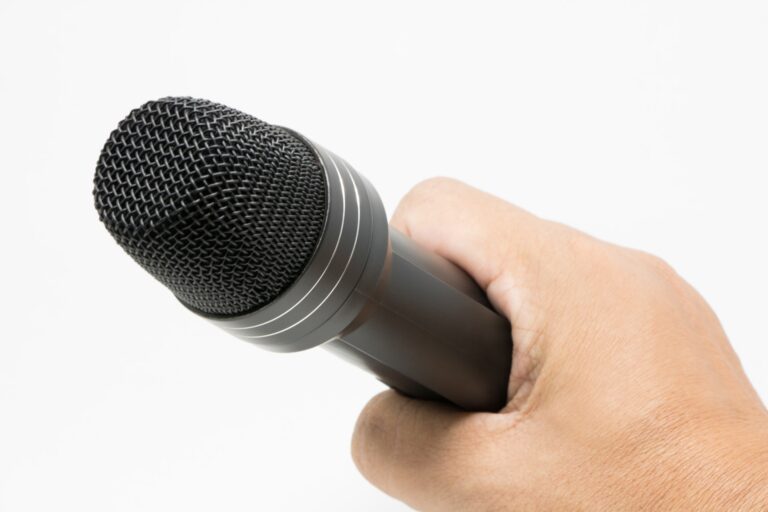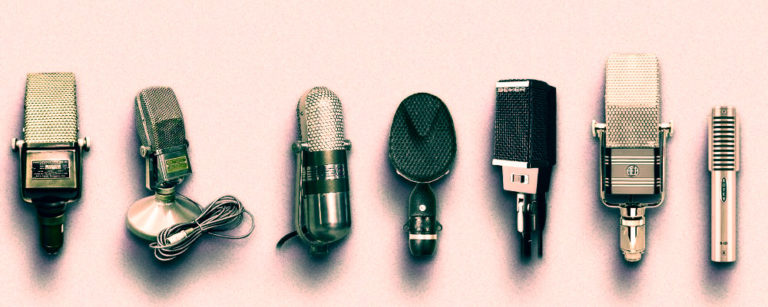We’re here to talk about something you may have seen but never given a second thought to – “Wireless Microphones”. These handy devices help our voices reach out, whether in a bustling conference, a lively concert, or even a small gathering. But do we really know what goes on behind the scenes? And if we were to pick one, how would we know which one is the best fit for our needs? With a bunch of different types out there, it can get a bit confusing.
In this article, we’ll take a friendly stroll through the world of wireless microphones, looking at the good and the not-so-good aspects of the various types. So, let’s dive right in!

Understanding the Basics of Wireless Microphones
Before we jump into the various types of wireless microphones, let’s get to know what a wireless microphone is and how it works. In the simplest terms, a wireless microphone is a device that helps your voice travel without the need for wires. Instead of relying on cables to transfer sound from the microphone to the sound system, a wireless microphone uses radio waves. This is quite an advantage, as it gives the speaker the freedom to move around without being restricted by wires.
Wireless microphones have been in use since the 1950s and have come a long way since their inception. Today, they’re used in a variety of settings – from musical performances and theatre productions to conferences and presentations, and even television and film production.
How do Wireless Microphones Work?
Understanding how wireless microphones work might seem a little daunting at first, but let’s break it down into simpler terms. The whole process revolves around two main components – the transmitter and the receiver.
The transmitter is housed inside the microphone itself. When you speak into the microphone, your voice creates sound waves. The microphone’s job is to capture these sound waves and convert them into an electrical signal. This electrical signal is then sent to the transmitter.
The transmitter, as its name suggests, transmits this electrical signal. But here’s where it gets interesting. Instead of sending the signal down a cable, it converts the signal into a radio wave and broadcasts it out into the air.
Now, where does this radio wave go? That’s where the receiver comes in. The receiver is usually stationed with your sound system. Its job is to ‘receive’ the radio wave that the transmitter sends out. Once it catches this radio wave, it converts it back into an electrical signal.
This electrical signal is then sent into your sound system. Here, it is converted back into sound – the same sound that was originally spoken into the microphone. And voila! Your voice has now traveled wirelessly from the microphone to the sound system!
While this is a general idea of how wireless microphones work, there are subtle differences in how different types of wireless microphones capture and transmit sound. But fear not, we’ll explore these differences as we delve into the various types of wireless microphones.
Types of Wireless Microphones
Handheld Wireless Microphones
Imagine being on a stage, with the spotlight shining down and the crowd waiting for you to speak. What comes to mind? Chances are, you’re picturing a handheld wireless microphone. These microphones are the most common type and are the ones we often see singers or presenters using. Their design is simple – they’re basically a stick you hold in your hand, with the transmitter built right in. Because they’re so straightforward to use, they’re loved by people in all kinds of professions, from performers to lecturers.
Pros and Cons of Handheld Wireless Microphones
Handheld wireless microphones are great for their simplicity and versatility. They can be passed around easily in a group setting, which makes them perfect for interviews or panel discussions. Plus, they’re generally quite sturdy and can withstand a few bumps and knocks.
However, the downside is that they require one of your hands to operate. This can be a limitation if you need to use both hands while speaking. Also, since they’re handheld, they might pick up unwanted noise from handling or movement.
Lavalier/Lapel Wireless Microphones
If you’ve ever watched a news broadcast, you’ve probably seen a Lavalier microphone. They’re those tiny microphones clipped onto the presenter’s lapel, right? These microphones are much smaller and more subtle than handheld ones. The microphone connects to a small transmitter that you can clip onto your belt or put in your pocket. This way, your hands are free to gesture or hold other things. It’s perfect for situations where you need to move around a lot, like during a theater performance or a public speaking event.
Pros and Cons of Lavalier/Lapel Wireless Microphones
Lavalier microphones are fantastic when you need your hands free. They’re small, discreet, and can be clipped onto your clothing. This makes them ideal for theater performances, presentations, and television broadcasting.
The flip side is that these microphones can pick up rustling noise from clothing. Also, they may not be as comfortable or secure on all types of clothing. Their small size can also make them a bit delicate, and they may not capture sound as robustly as larger microphones.
Headset Wireless Microphones
Remember those pop stars who dance and sing at the same time without missing a beat? They can do that due to headset wireless microphones. These microphones, as the name suggests, are worn on the head. The microphone part usually sits near the corner of the mouth. This leaves both hands completely free, making these microphones perfect for performers or fitness instructors.
Pros and Cons of Headset Wireless Microphones
Headset microphones are a favorite among performers, especially those who sing and dance simultaneously. Since they’re worn on the head, the microphone stays in the same position relative to the mouth, which means the sound remains consistent even when the user is moving.
The drawbacks, however, include potential discomfort from wearing the device on the head for an extended period. Also, headset microphones are quite visible, which might not suit all applications, particularly those where aesthetics or discretion are important.
Shotgun Wireless Microphones
Shotgun microphones are a bit different. They’re super long and slim, and they’re designed to pick up sound from a specific direction. This makes them great for situations where you can’t get close to the sound source. If you’re filming a scene from a distance, for example, a shotgun microphone can help capture the sound without getting in the way of the shot. These microphones connect to a separate transmitter, which can be quite bulky, so they’re not as portable as the other types.
Pros and Cons of Shotgun Wireless Microphones
Shotgun microphones excel at picking up sounds from a distance. They have a narrow focus, which allows them to capture sound from the direction they’re pointed, and ignore most of the noise from the sides and back. This makes them excellent for filmmaking or broadcasting.
On the downside, shotgun microphones are not very portable due to their length and the need for a separate transmitter. They also require careful positioning to capture sound effectively. Furthermore, they may not perform as well in noisy environments since they can pick up any sound within their focused direction.”
Remember, each type of microphone has its strengths and weaknesses, and the best one for you would depend on your specific needs and situation.
Factors to Consider when Choosing a Wireless Microphone
Your Specific Needs: Ask yourself what you’ll be using the microphone for. Will you be moving around a lot, or will you be mostly standing in one spot? Do you need your hands free, or is it okay to hold the microphone?
The Environment: Consider where you’ll be using the microphone. Is it a quiet place, or will there be a lot of background noise? Is it a small room, or a large open space? Different microphones work best in different environments.
Sound Quality: You want a microphone that will make you sound good. But keep in mind that different microphones pick up sound in different ways, so you’ll want to choose one that suits your voice and the type of sound you want to capture.
Battery Life: Since wireless microphones run on batteries, you’ll want to check how long the batteries last. You wouldn’t want your microphone to die in the middle of a performance or presentation!
Range: How far can you move away from the receiver and still be heard clearly? This is something to check, especially if you plan to move around a lot during your performances or presentations.
Durability: Let’s face it, accidents happen. You want a microphone that can withstand a bit of rough handling. So, consider how sturdy and durable the microphone is before making your choice.
Budget: Last but not least, consider how much you’re willing to spend. Wireless microphones come in a wide range of prices, so you’ll want to choose one that fits your budget without compromising on your needs.
The Future of Wireless Microphones
Let’s step into the future for a moment. What will the world of wireless microphones look like in the years to come? Well, if the trends we’re seeing now are any indication, it’s going to be pretty exciting!
First off, we can expect to see wireless microphones becoming even more portable and convenient. Technological advances are making devices smaller and lighter, without compromising on sound quality. So, we could soon be seeing microphones that are as easy to carry around as a set of keys.
Another big change we might see is even better sound quality. Right now, wireless microphones are already pretty good at capturing sound. But as technology continues to advance, we’re likely to see microphones that can pick up even the slightest nuances in sound. This could make performances and presentations even more impactful!
Then there’s the issue of battery life. As anyone who’s used a wireless microphone knows, running out of battery in the middle of a performance is a real bummer. But don’t worry, technology’s got this covered too! Researchers are constantly working on improving battery technology, and we can expect to see wireless microphones with longer battery life in the future.
And finally, let’s not forget about the potential of smart technology. Imagine a microphone that can adjust its settings automatically based on your voice or the environment. Or one that can connect seamlessly with other devices, making it easier to set up and control your sound system. Sounds cool, right?
So, as we step into the future, one thing’s for sure. The world of wireless microphones is set to become even more exciting, innovative, and user-friendly. And we can’t wait to see what’s next!
Conclusion
In conclusion, it’s evident that each type of microphone holds its unique advantages and drawbacks. Handheld microphones, for instance, offer durability and ease of use, yet they require one hand for operation. Lavalier microphones provide hands-free convenience, but they may pick up clothing noise and may not always secure well on certain attire. Headset microphones guarantee consistent sound even with movement, but may not be as comfortable or discreet as desired. Shotgun microphones excel at capturing sound from a distance and in a specific direction, yet they are less portable and may not perform optimally in noisy environments.
These insights highlight the importance of considering several factors when choosing a wireless microphone, such as the specific needs, the environment, sound quality, battery life, range, durability, and of course, the budget.
In essence, understanding the different types of wireless microphones and their strengths and weaknesses can significantly aid in making an informed decision. It’s paramount to remember that the ‘perfect’ microphone depends largely on individual requirements and situations. Thus, making the right choice ensures that your voice is captured and projected optimally, providing a seamless audio experience for your audience.
So here’s to making an informed choice in your next wireless microphone, ensuring that your voice, your expression, and your message are always heard loud and clear.



